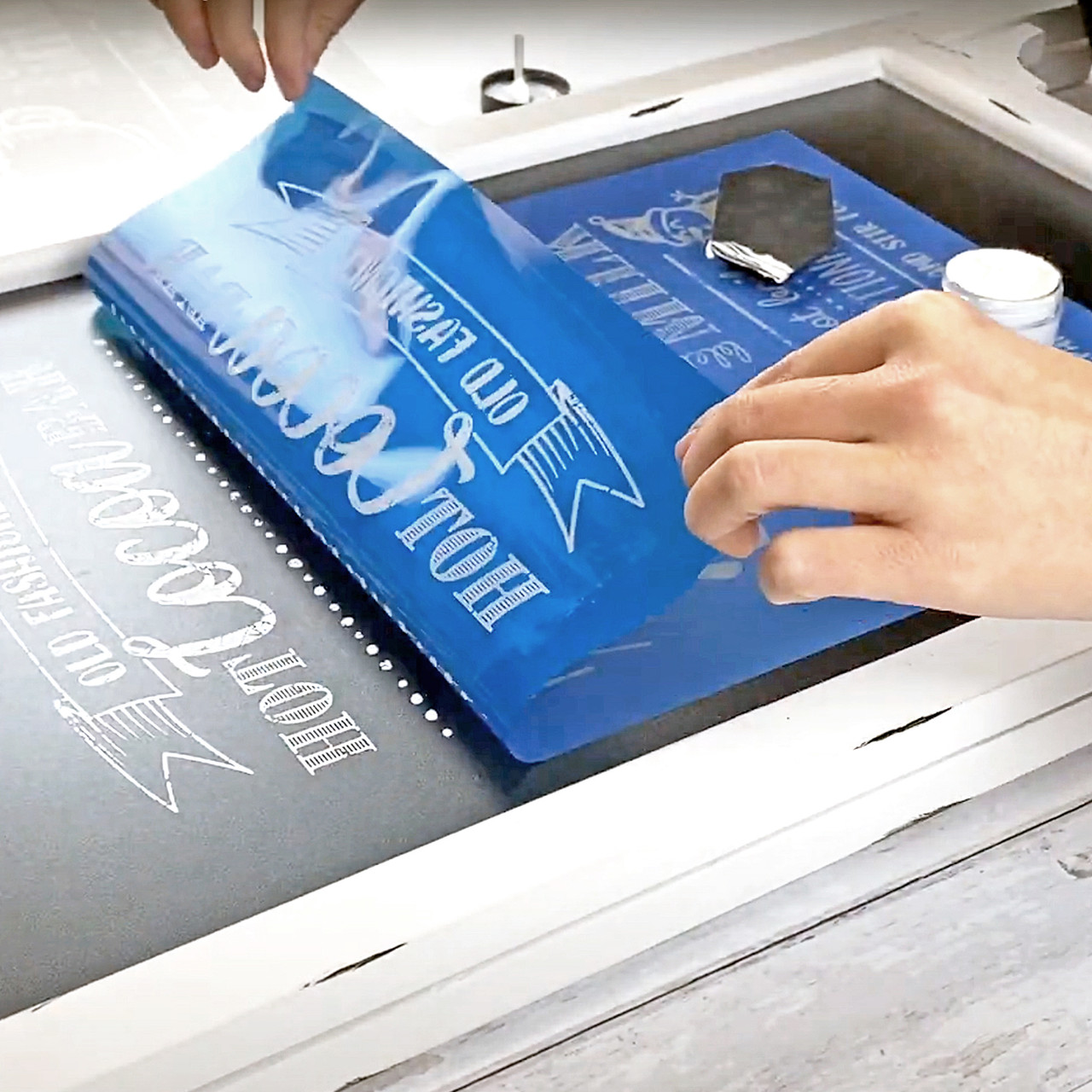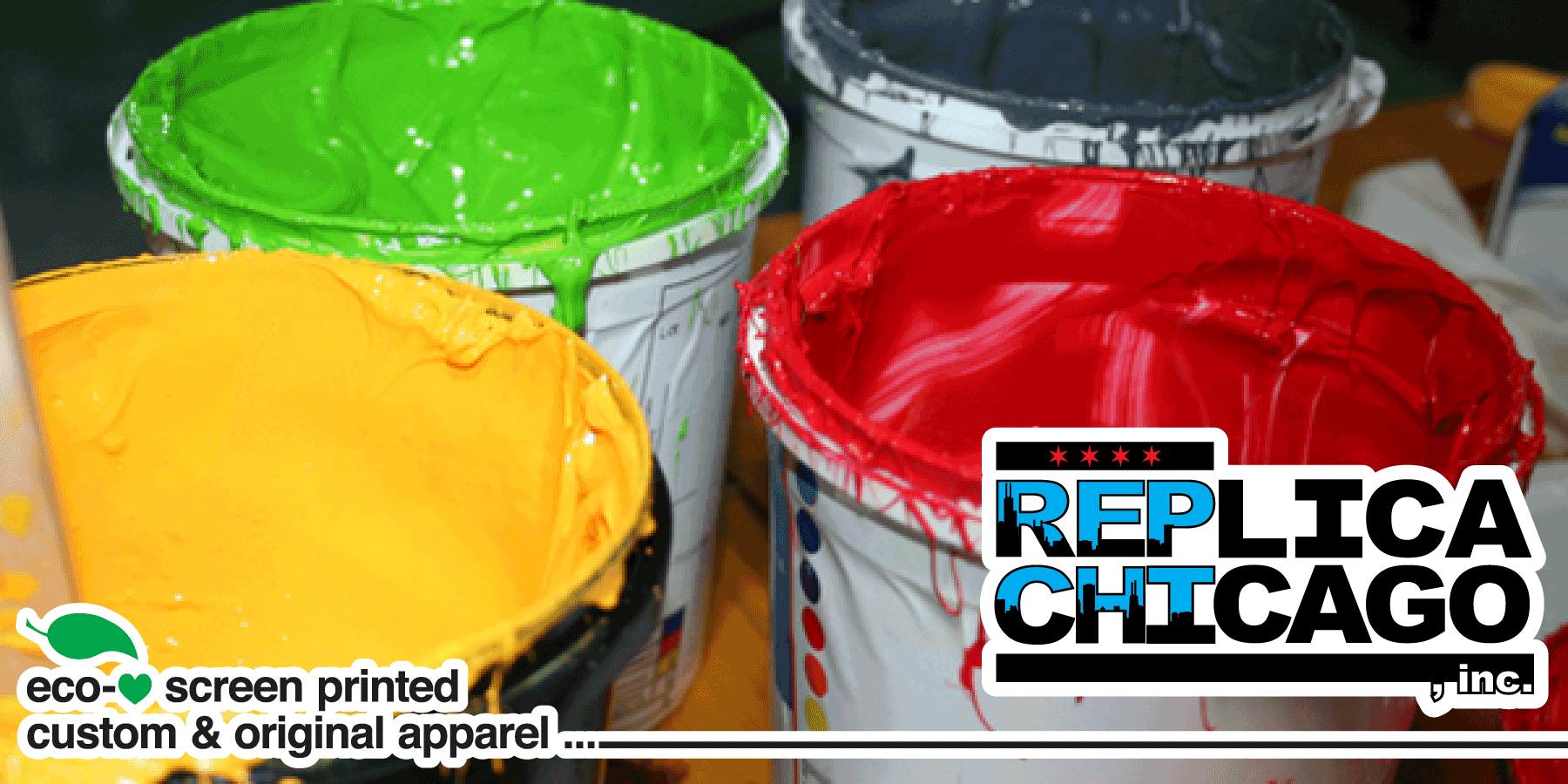Budget-Friendly T-Shirt Printing for Startups
Budget-Friendly T-Shirt Printing for Startups
Blog Article
Display Printing Uncovered: Whatever You Required to Know Concerning T-Shirt and Garment Printing Techniques
If you have actually ever asked yourself how those vivid layouts wind up on your preferred t-shirts, you remain in the best area. Display printing is an interesting approach that incorporates art with method, providing countless opportunities for imagination. Recognizing the fundamentals, from tools to ink choices, can greatly influence your outcomes. Ready to explore the vital components that make screen publishing an art kind? Let's uncover the details that can boost your projects.
The Basics of Display Printing: How It Functions
When you plunge right into display printing, you'll discover it's both an art and a scientific research. At its core, screen printing involves creating a pattern, or display, that enables ink to go through only in particular areas (screen printing kit). You begin by picking your style and preparing your display with a light-sensitive emulsion. As soon as you reveal this emulsion to light, it sets, leaving your style as an adverse area.
Next, you'll mix your inks and prepare your printing surface. Setting the display over the material, then utilize a squeegee to push ink via the display onto the garment. This procedure needs precision, as you desire clear, dynamic prints. After printing, you'll heal the ink with warmth, guaranteeing it abides by the fabric and lasts with washes. Each step is essential, and grasping them will certainly boost your screen printing abilities, changing easy garments into distinct, expressive pieces.
Sorts Of Screen Printing Techniques
When you grasp the fundamentals of screen printing, it's time to discover the various strategies that can elevate your designs. One preferred technique is conventional display printing, where ink is pressed via a stenciled screen. This strategy is wonderful for vibrant, lively colors. There's water-based ink printing, which provides a softer feeling and is environment-friendly, however it calls for a various method to healing.
An additional option is plastisol printing, known for its durability and dazzling colors, making it a preferred for numerous brands. Experiment with halftone printing to develop gradient impacts and elaborate designs.
Vital Equipment for Display Printing
To accomplish spectacular results in screen printing, having the ideal devices is basic. You'll require a sturdy screen printing structure, which holds the mesh that transfers your design onto the garment. Next, invest in high-quality mops; these are crucial for using ink equally throughout the screen.
Choosing the Right Inks and Products
When selecting inks and products for screen printing, you need to take into consideration the sort of ink that works finest for your task. Think of material compatibility to ensure your designs look last and fantastic long. Discover environment-friendly ink alternatives to make your printing procedure a lot more sustainable.
Sorts Of Display Inks
Choosing the right display ink is crucial for attaining dynamic, sturdy prints that satisfy your job's requirements. There are a number of sorts of screen inks to take a look at. Plastisol ink is preferred for its convenience and simplicity of use, offering exceptional color opacity on dark textiles. Water-based ink, on the other hand, offers a softer feel and is environmentally friendly, making it optimal for those wanting to minimize their ecological influence. Discharge inks remove color from the material, leading to a soft, classic look however require particular handling. Specialty inks, such as glow-in-the-dark or metallic, can include distinct results to your designs. Evaluate your task demands and pick the ink that aligns ideal with your preferred outcome.

Textile Compatibility Factors To Consider
Comprehending material compatibility is vital for attaining top notch screen prints, specifically considering that different products react distinctively to numerous inks. Constantly check your inks on sample fabric to guarantee they stick appropriately and maintain color honesty. Furthermore, maintain in mind that material weight and appearance can affect the last result, so picking the best ink and product combination is crucial for your project's success.
Eco-Friendly Ink Options
Eco-friendly inks are ending up being a prominent choice for screen printers that want to decrease their ecological impact while keeping high quality. When picking inks, take into consideration water-based inks, which are less damaging and easier to tidy up contrasted to traditional solvents. These inks bond well with fabrics, supplying vivid outcomes without harmful chemicals. You may also check out eco-solvent inks that make use of fewer unstable organic compounds (VOCs), making them a much safer alternative for both your wellness and the planet.
Additionally, try to find inks made from renewable resources, such as soy or vegetable-based choices. By selecting the ideal inks and explanation products, you'll not only create sensational styles but likewise add to a much more sustainable printing process. Make the button, and your prints will certainly show your commitment to the atmosphere!
Preparing Your Style for Display Printing

File Layout Demands
To guarantee your layout looks sharp and dynamic on fabric, you'll require to pay very close attention to file layout requirements for screen printing. Beginning with vector documents like AI or EPS, as they can be scaled without losing top quality. If you use raster pictures, opt for high-resolution documents, such as TIFF or PNG, ideally at 300 DPI. Avoid using JPEGs, as they can shed quality when resized. Also, make certain your style has a transparent background to avoid undesirable white sides on your prints. Keep color settings in mind; CMYK is basic for screen printing, so transform your RGB makes as necessary - screen printing kit. By adhering to these guidelines, you'll set your art work up for a successful print.
Color Separation Techniques
Shade separation is a crucial action in preparing your layout for screen printing, and understanding it can substantially enhance your print high quality. You'll require to break your design right into specific colors, as each shade needs a separate display throughout printing. Begin by determining all the colors in your design and develop layers each. You can utilize software like Adobe Photoshop or Illustrator to isolate and separate shades successfully. Be particular to save each layer as a different file, generally in a style like TIFF or PSD. This accuracy not only guarantees accurate shade depiction but additionally simplifies the printing process. By paying focus to color separation, you'll achieve vibrant and expert lead to your screen-printed garments.
Resolution and Size
Accomplishing the most effective cause display printing starts with guaranteeing your layout has the best resolution and dimension. Ideally, your artwork ought to go to the very least 300 DPI (dots per inch) for sharp, clear prints. If you utilize lower resolution, your final item might look pixelated and amateur.
When it involves size, take into consideration the measurements of your print location. Layout your art work to match the final print dimension, ideally developing it in the real dimensions you'll be publishing. By doing this, you'll prevent any unforeseen scaling problems.
Constantly check your style in both vector and raster styles. Vector graphics can be scaled without losing high quality, making them perfect for screen printing. Preparing properly will guarantee your layout looks amazing on every garment!
Step-by-Step Screen Printing Process
Display printing is a vibrant procedure that permits you to develop vibrant styles on numerous surface areas. To obtain started, you'll need a display, emulsion, and your picked ink.
After cleaning out the unexposed solution, your display is prepared. Establish it up on your printing surface area and align your garment underneath it. Pour ink onto the screen and make use of a squeegee to press the ink via the pattern onto the material. Raise the display thoroughly and let the print dry. Ultimately, heal the ink making use of warmth to ensure longevity. That's it! You've effectively display printed your layout.
Tips for Effective Screen Printing Projects
While you're diving right into your screen printing jobs, bear in mind that preparation is vital to success. Begin by gathering all from this source your materials-- inks, garments, squeegees, and displays. A tidy workspace assists protect against unwanted errors, so clean up before you start.
Next, verify your art work is high-resolution and appropriately sized for your garment. Evaluate your display for proper direct exposure and clean it extensively to prevent spots. When blending your inks, adhere to the maker's guidelines to accomplish the ideal consistency.
During printing, use even stress with your squeegee for consistent results. Do not rush; take your time to confirm each print fulfills your criteria. After printing, let your garments completely dry completely prior to dealing with or packaging them.
Last but not least, always keep a sample of your help future recommendation. By doing this, you can assess your progress and boost your techniques gradually. Happy printing!

Often Asked Concerns
The length of time Does It Require To Set up a Screen Printing Job?
Establishing a screen printing task commonly takes around thirty minutes to an hour. You'll prepare the displays, mix inks, and change journalism. The moment varies based on complexity and experience, so remain arranged!
Can I Print on Different Fabric Types Using the Exact Same Strategy?
Yes, you can publish on different fabric kinds utilizing the very same technique, however you'll need to adjust your inks and settings. Some materials take in ink differently, so trying out warranties the best results for each and every product.
What Prevail Blunders to Prevent in Screen Printing?
When display printing, prevent common blunders like utilizing the incorrect ink, neglecting appropriate exposure times, or missing pre-press checks. Always examine your configuration and maintain tidy displays to guarantee top quality results each time.
Exactly How Can I Appropriately Clean and Keep My Screen Printing Tools?
To appropriately clean and keep your screen printing tools, you ought to on a regular basis wash screens with appropriate solvents, examine squeegees for wear, and ensure all tools are saved dry and dust-free. Consistency stops pricey repair work and improves performance.
Is Screen Printing Eco-friendly Compared to Various Other Approaches?
Display printing can be much more eco-friendly than read the full info here various other methods, specifically if you utilize eco-conscious materials and water-based inks. By picking sustainable materials and techniques, you decrease waste and lessen your effect on the planet.
Screen Printing Uncovered: Everything You Need to Know Regarding Tee Shirt and Garment Printing Techniques
At its core, screen printing involves developing a pattern, or display, that enables ink to pass with just in certain locations. Setting the screen over the fabric, then use a squeegee to push ink through the screen onto the garment. One popular technique is typical screen printing, where ink is pressed with a stenciled display.When choosing inks and products for display printing, you require to take right into account the kind of ink that functions best for your project.
Report this page